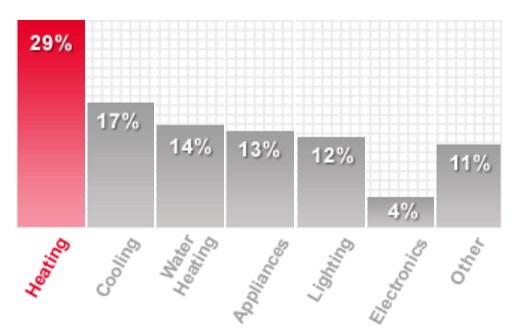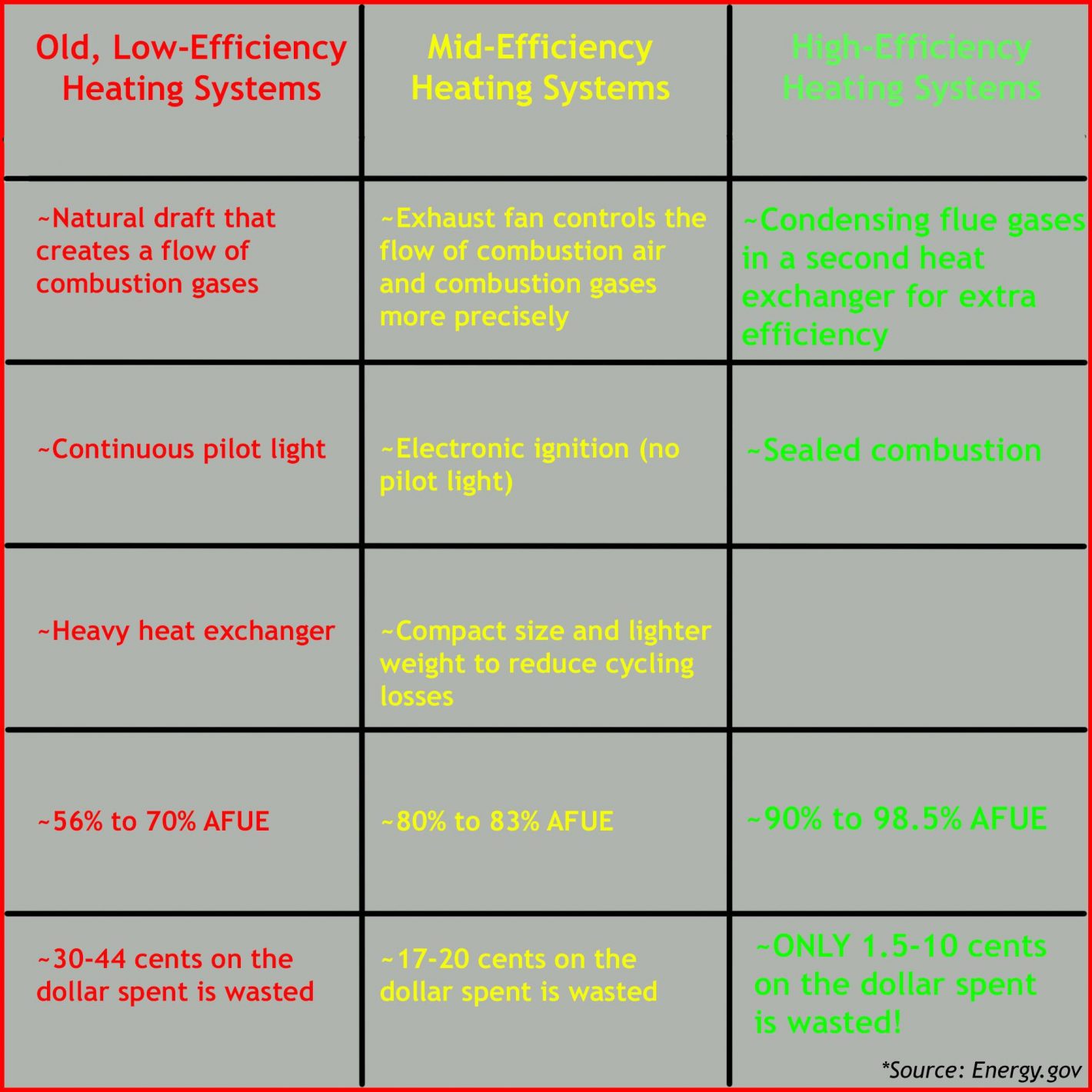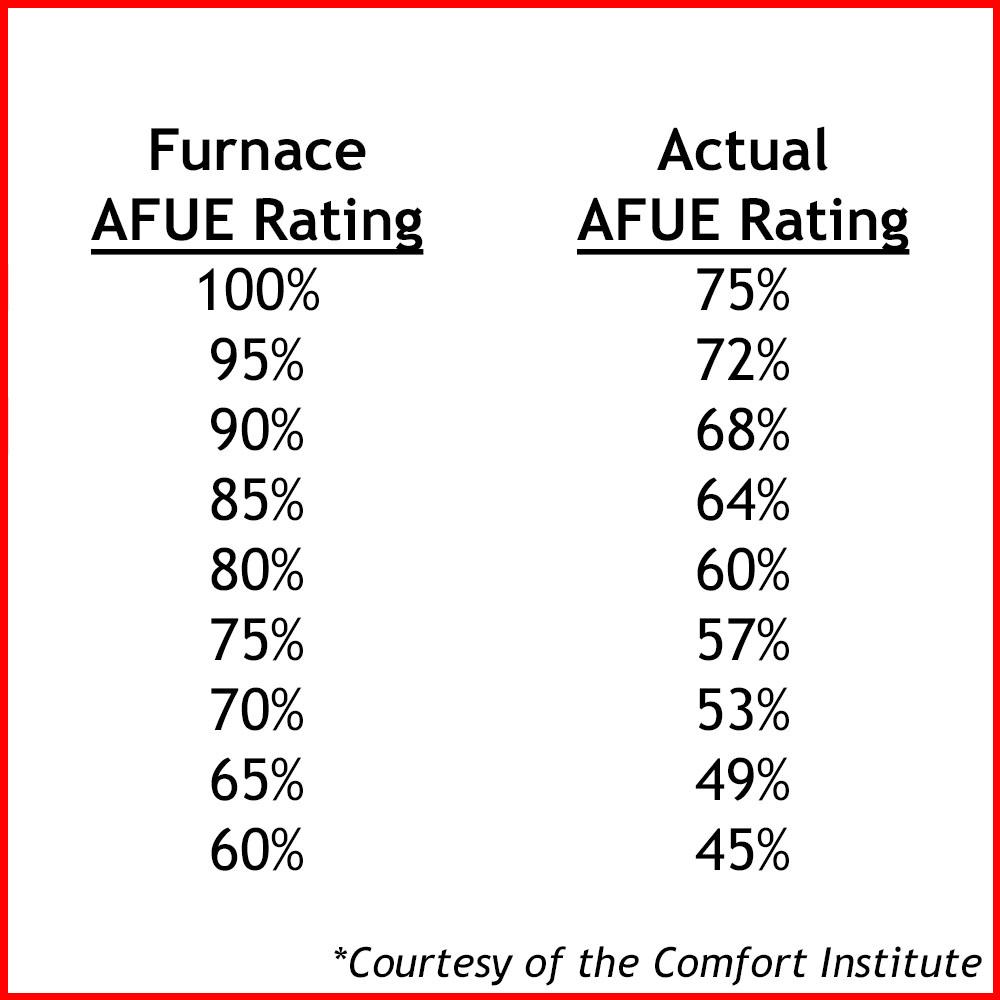AFUE: A Term Every Homeowner Should Know
Home >
Winter is pretty and all, but I think most homeowners would agree that it belongs outside and not in the living room.

Now that the cold weather is settling in, I thought we’d discuss a simple term that every homeowner really ought to know, since it can save you money and increase your comfort.
AFUE DEFINED
AFUE, or Annual Fuel Utilization Efficiency, is the measurement of furnace and boiler heating efficiency. The more heat a system puts out for each unit of energy that it takes in, the higher the AFUE rating, and the more efficient your system is going to be. For instance, “an AFUE of 90% means that 90% of the energy in the fuel becomes heat for the home and the other 10% escapes up the chimney and elsewhere,” says Energy.gov.
A higher AFUE rating equates to lower energy bills and a higher positive impact on the environment. Just like SEER for air conditioning systems, the best way to think about AFUE is to equate it with the gas mileage for your car. The more efficient your car happens to be, the less you pay at the pump. Residential furnaces and boilers are similar, only instead of gasoline, you’re paying for oil, gas, or electricity. The highest rated furnaces for 2016 reached as high as 98+ AFUE!
WHY IS AFUE SO IMPORTANT?
This chart from EnergyStar.gov says it all. When the average cost of heating accounts for nearly a third of energy consumption for homeowners, fuel efficiency becomes extremely important.

Add that to the uncertainty in our nation’s energy supply coupled with rising energy costs, and you’ve got a strong case for a high-efficiency heating system that can slash the heating percentages you see above. At the very least, you’ll want to consider annual maintenance that can keep your system in peak condition for years to come.
WHAT’S MY AFUE?
There are four simple ways to figure out what the AFUE rating is on your furnace or boiler. The first step is to check your owner’s manual. If you don’t have the manual handy, then look at the rating plate on the inside or outside of your unit. Third, you can search online for the make and model number of your unit … or you can always give [name] a ring. We’ll be happy to help!
AFUE & SAVINGS
You can also break the efficiency of your system down into three basic categories: Old, Low-Efficiency, Mid-Efficiency, and High-Efficiency:

This chart reveals a few key points.
Most importantly, we see the AFUE range and what that means for your bank account in last two rows: 56-70% AFUE, 80-83% AFUE, and 90-98.5% AFUE respectively. You can see that the AFUE ratings on these systems improve by leaps and bounds the newer they become.
But how does that translate into savings for your bank account?
An Old, Low-Efficiency system that’s only 56-70% efficient means that 30-44% of the fuel you burn is being wasted … so that’s 30-44 cents of every dollar you spend on heating being wasted. Mid-efficiency systems waste about 17-20 cents of fuel on the dollar … but high-efficiency systems only lose about 1.5-10 cents of fuel on the dollar.
Would you rather waste 44 cents on the dollar, 20 cents on the dollar, or just a few pennies on the dollar?
The chart also reveals some other points of interest. In the first column—Old, Low-Efficiency Heating Systems—you’ll find that “natural draft creates a flow of combustion gasses.” This “draft” means that your system is sucking heat out of your home in order to achieve combustion. It also means that there’s likely no safety in place, so if your chimney gets plugged by debris, birds or bees’ nests, or some other type of critter, then all those dangerous exhaust gases are going to get backed up into your home. One of our techs once found a dead raccoon in a venting chimney. True story.
You’ll also see “sealed combustion” in the High-efficiency Heating Systems column. This means that new systems take in external air for combustion, rather than using the air inside your home; since it’s a closed system, no precious warm air is cycled out of your home as they are in older systems … which saves you money. This maximizes efficiency, and also has the added benefit of keeping humidified air inside your home where you need it, since winter air is typically so dry.
Third, under Old, Low-Efficiency Heating Systems, the “continuous pilot light” means that older systems are continuously burning fuel, which is obviously costing you money.
THE COLD TRUTH
For homeowners with furnaces, there’s something more you should know about AFUE and how it effects your comfort and your bank account. AFUE ratings don’t factor in the energy loss of ductwork in forced air systems, and even when brand new, ductwork leaks 20-40%, according to the Department of Energy. That’s 20-40 cents of every dollar you spend on heating going out the window through your ductwork … and that’s on top of your AFUE rating.
Didn’t know you were heating the world, did you?

This graph above shows AFUE degradation levels. Furnace heating output on the coldest days, on average, is reduced by about 25%. The column on the left shows what furnaces are rated at, but the column on the right is their actual performance in the field on the coldest days. Given this reduction in efficiency, your AFUE rating becomes even more important when the cold weather really sets in.
Luckily, there’s an easy fix for duct sealing that can eliminate up to 98% of air leakage.
THE BOTTOM LINE
When you view these facts through the lens of efficiency and costs savings, it becomes clear that energy waste is why a high AFUE rating is so critical for homeowners and national energy consumption, as well as for the environment; efficient technology is green technology.
It’s no secret that the performance of your heating system is heavily determined by your system’s efficiency (a great reason to schedule routine maintenance), but what is less well-known is that the federal government and utility companies will often compensate homeowners through energy rebates for installing high-efficiency systems!
In any case, when you’re ready to pick a new heating system, you’ll probably want to factor AFUE ratings into your buying decision.
Bottom line: Choose a heating system with a high AFUE rating (90 AFUE minimum) to get the most bang for your buck. Or at the very least, have your current system maintained annually to keep it functioning as efficiently as possible, and make sure you hire a professional, because 70% of an HVAC system’s lifespan and efficiency is dictated by the quality of the HVAC contractor you hire!

Adrian W.
Marketing Manager
CONTACT US TODAY



As Seen & Heard On







Reach Out to Our Team for More Details
Feel free to call Sanford Temperature Control or fill out the online form for more information. You may also get in touch with our team to schedule an appointment. We look forward to hearing from you.

